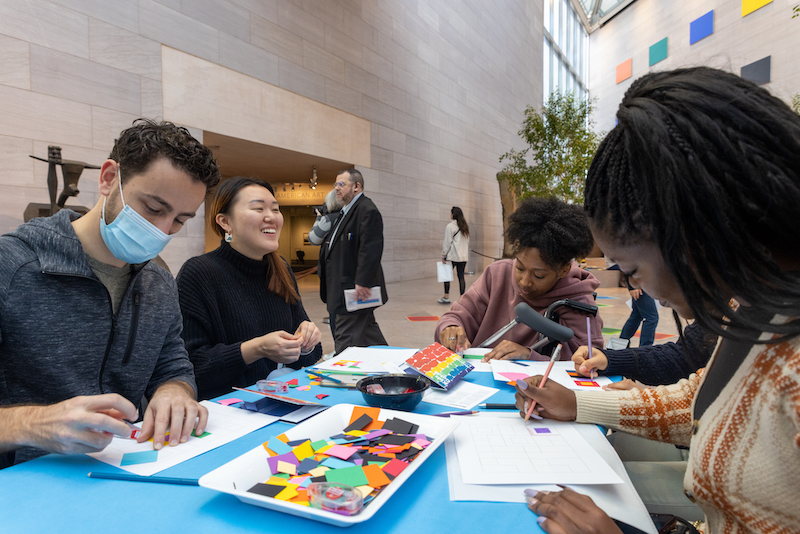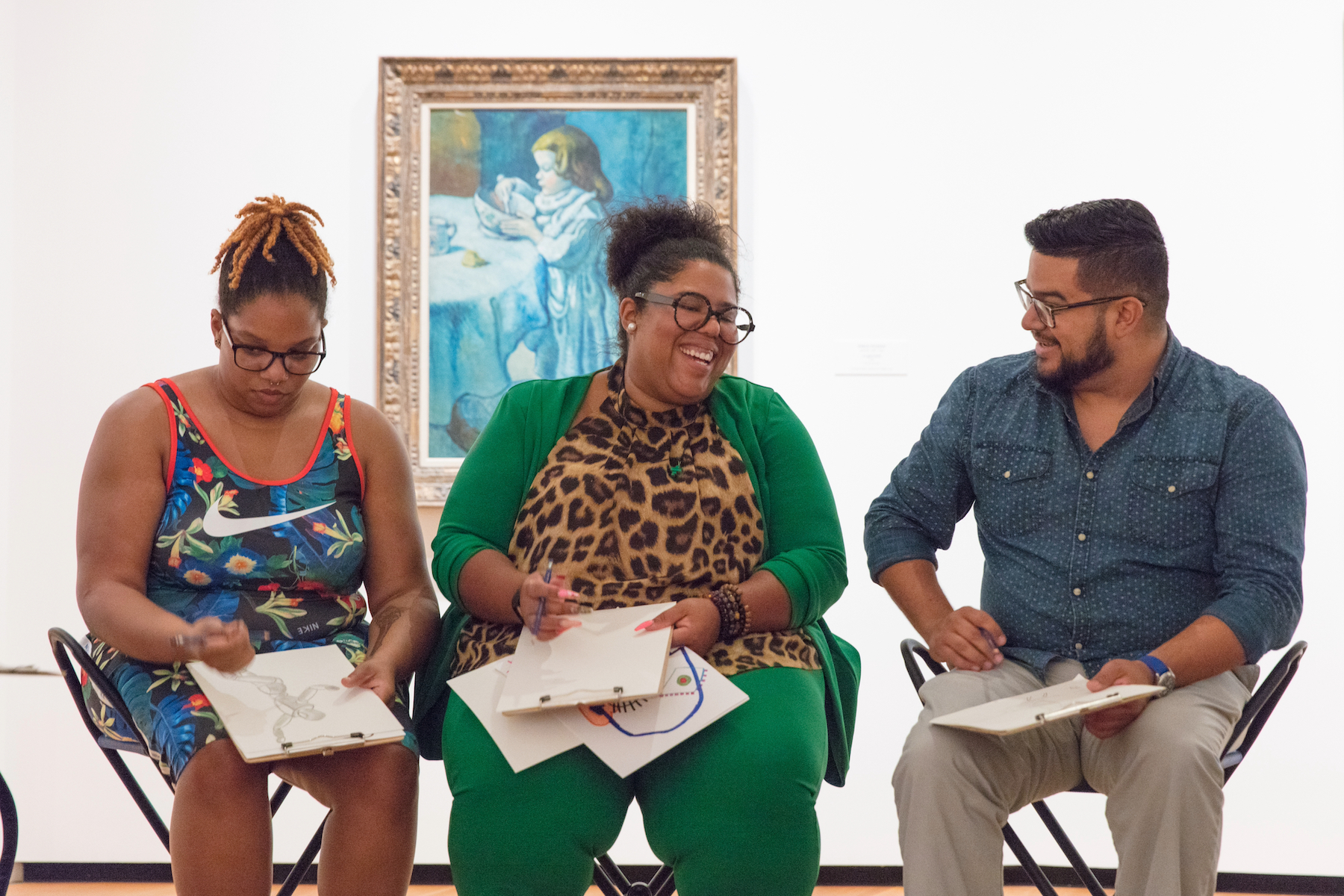Is being more creative on your list for 2024? Whether you’ll be journaling, sketching, or kickstarting another creative habit, we know it can be daunting.
We teamed up with our museum educators and teaching artists to help you make it stick. Read on for five tips to grow your creativity.
1. Make it easy—really easy

It can be tricky to set aside time and energy to create. But lowering the barriers to getting started can help.
Set a timer for just five minutes! Start small and you’ll be surprised at how much you can make in that time. A shorter time commitment is easier to stick with, and any time you spend creating is a bonus.
Also consider setting aside a bit of space—a corner of a table or a small tray—where your materials sit at the ready. That way, you don’t have to unpack everything to get going. You’ll be able to pick up where you left off.
2. Use what you have
Don’t fall into the trap of thinking that you need “nicer” supplies to get started. Try using what you have on hand.
Did you know that artist Anthony Caro first sketched the National Gallery Ledge Piece (which sits proudly in our East Building Atrium) on the back of a donut box?

Anthony Caro, Study for "National Gallery Ledge Piece", 1978, black felt-tip pen on cardboard (doughnut box), Gift of the Artist, 1979.42.1

Anthony Caro, National Gallery Ledge Piece, 1978, welded steel, Gift of the Collectors Committee, 1978.21.1
But you don’t have to use takeout containers or napkins as your canvas. Look around your home: you’d be surprised by how many materials you already have. You can turn images torn out of old magazines into collage. (And did you know that you can make a glue by boiling flour and cornstarch in water?) And you can carve sturdy vegetables like potatoes into ink stamps.
3. Find support in community
You might find the consistent motivation you need from a supportive group of people. It can be so inspiring to see what others create. And showing up to a scheduled group session can keep your momentum going.

If your goal is to draw more this year, you’re in luck! Our Sketchbook Club meets virtually four times a month. Designed for young artists and their families, this program welcomes creatives of all ages in playful, imaginative artmaking. With guidance from a teaching artist, we spend 30 minutes making sketches inspired by works from the National Gallery’s collection. Add new drawings to your sketchbook or just doodle along with us as we explore a different prompt each session.
4. Embrace chance
Don't overthink it. Surrendering some control will make your creative process more fun and less fussy. Take inspiration from Morris Louis, who poured diluted acrylic paint onto unprimed canvas and let gravity dictate where the colors would flow.

Morris Louis, Beta Kappa, 1961, acrylic on canvas, Gift of Marcella Louis Brenner, 1970.21.1
To introduce more chance into your sketching, try drawing with your less dominant hand (your left if you’re right-handed and vice versa). Expect silliness to ensue: crooked lines and wonky shapes will dance all over your page.
If you write creatively, tear out a page from the newspaper to make a found poem. You can cut out words and phrases that jump out to you. Or use ink to black out text and create your own interpretation with what remains visible.
5. Keep a record of what you make
After you wrap up each session, celebrate this step along your creative journey and document what you made. You might take snapshots of your work, keep a sketchbook, or collect your writing in a journal. The act of tracking where you started and where you’re going will help you see patterns and progress.

Mark Rothko, Sketchbook, sketchbook, Gift of The Mark Rothko Foundation, Inc., 1986.56.645.33
When a poem, a painting, or another project doesn’t turn out how you hoped, remember this: it’s not about the outcome. It’s about how small things add up to big things. It’s about how consistent acts of creativity will change you.
